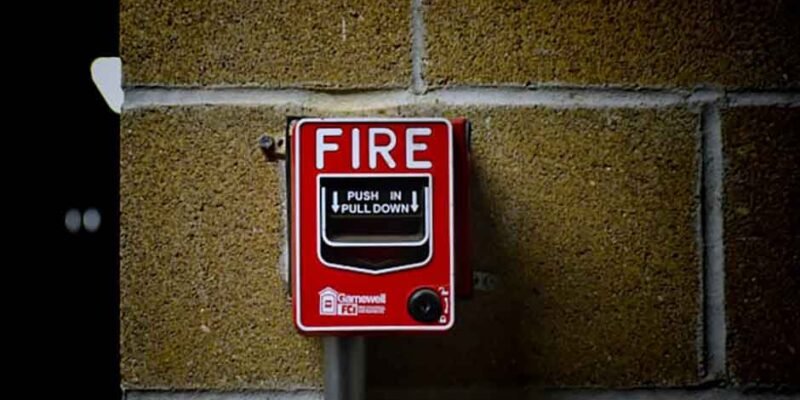Fires can spread in seconds, but their devastation lasts far beyond the moment flames ignite. Advanced technologies and smarter building systems will give more control over danger in 2025 than ever before. Still, prevention depends on planning and persistent implementation of contemporary safety criteria. Fire safety calls for more than just wall extinguishers in homes, companies, or public areas. It takes proactive approaches combining innovation with diligence—methods that anticipate danger and respond before disaster strikes.
1. Creating Fire-Safe Infrastructure Through Modern Building Design and Material Choices
Buildings designed with fire safety in mind provide superior resistance from the inside out. From the time construction starts, fire-rated components, including treated wood, steel frame, and non-combustible insulation, lower a structure’s vulnerability. Designed with fire-resistant barriers, deliberately segmented design stops quick flame spread throughout the floor or room. Safe evacuation paths built into stairwells and hallways let residents swiftly leave to reduce exposure. Modern ventilation systems feature smoke control devices meant to guide harmful gasses away from exits. Smart glass and automatic shutters can also reduce external fire exposure. Applying fire-conscious design principles throughout the planning phases transforms the whole construction into a proactive defensive system.
2. Elevating Fire Detection Capabilities with Intelligent Technology Integration
Fire prevention depends critically on detection time; 2025 offers improved solutions going beyond smoke alarms. Before obvious signs appear, advanced sensors today detect temperature variations, gas emissions, and early-stage burning. These systems instantaneously notify emergency responders and residents by use of control hubs. By analyzing heat patterns and particle concentration, artificial intelligence integration lets detection units distinguish between real dangers and false alarms. Commercial fire alarm systems now offer real-time mapping and remote warnings in bigger buildings so that you may watch the precise location of a fire source via mobile devices or central monitoring. This degree of accuracy guarantees successful intervention before fires spiral out of control and reduces reaction times.
3. Enforcing Strict Electrical System Maintenance to Eliminate Hidden Ignition Sources
Faulty wiring and overloaded circuits remain the leading causes of structural fires. Thorough electrical inspections and prompt fixing of any issues found are key components of prevention in this field. Maintaining safe electricity flow depends on replacing aging parts and upgrading old panels. Smart breakers and load management systems in buildings immediately identify harmful spikes or abnormalities in power consumption, therefore stopping circuits before overheating starts. Ground fault interrupters and arc fault detecting devices also help to identify issues that conventional fuses miss. Every electrical system runs with restrictions; therefore, respecting those limits through planned maintenance helps to minimize breakdowns that could rapidly cause fire behind walls or ceilings.
4. Reducing Human Error Through Mandatory Fire Safety Education and Training
Technology by itself cannot correct errors brought on by ignorance or carelessness in mandatory fire safety education and training. The actions of the individuals living in a space determine most of the fire prevention. Starting safety seminars and fire drills helps to build responsibility and readiness in society. During an emergency, those who know exit routes, extinguisher locations, and response protocols—employees, renters, or visitors—become assets rather than liabilities. Assigning specific fire wardens gives commercial environments organization for evacuation activities, therefore minimizing confusion and injury hazards. Daily safe behaviors also are reinforced by visual reminders, including instructional posters, fire maps, and exit signs. Including education in daily activities helps you to strengthen behaviors that stop mishaps and lower anxiety during actual events.
5. Integrating Smart Suppression Systems to Contain Fire Damage Automatically
In 2025, the most efficient suppression systems will not depend just on water. Each is designed for particular settings like server rooms, kitchens, or chemical storage facilities; advanced options include chemical mist systems, foam-based suppression, and dry powder distribution. When prompted by heat or flame detection, these systems turn on automatically and are deliberately zoned to separate impacted regions without compromising neighboring property. Thermal imaging included in ceiling-mounted suppression heads in homes as well as companies allows the flow to the most intense part of the fire. This focused strategy raises efficiency and helps to save resources. Additionally connected with detecting systems, suppression devices enable centralized control for instant action whenever a threat is identified.
Conclusion
In 2025, fire safety has developed into a complex fusion of technology, design, and human responsibility. Every tactic has an objective other than only reacting to fire—that of outwitting it before it spreads. Using the correct tools and procedures helps you to take charge of risk rather than only reduce it. The capability to prevent disasters is already available. The challenge is to use it with purpose, accuracy, and consistency.







Comments